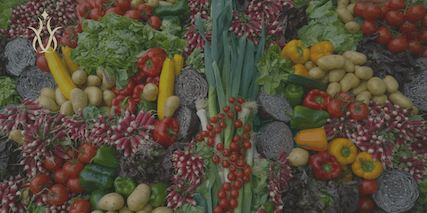Incorporating low-calorie vegetables into your diet can be a game-changer in the journey towards healthier eating and weight management. This article explores the top ten vegetables that are low in calories and packed with nutrients, making them perfect for anyone looking to maintain a balanced diet without consuming excessive calories. From the crunchy freshness of celery to the versatile cauliflower, each vegetable offers unique benefits and can be easily integrated into various meals.
Key Takeaways
- Incorporating a variety of low-calorie vegetables can help manage weight without sacrificing nutrition.
- Vegetables like celery, cucumbers, and radishes are not only low in calories but also high in water content, aiding hydration.
- Zucchini, tomatoes, and bell peppers are versatile and can be used in numerous recipes, enhancing flavour without adding many calories.
- Leafy greens such as spinach provide essential vitamins and minerals, supporting overall health while keeping calorie intake low.
- Vegetables like broccoli and cauliflower are high in fibre, promoting satiety and aiding in digestion, making them ideal for weight management.
1. Celery

Celery is renowned for its low-calorie content, making it a staple for anyone looking to maintain a healthy diet without sacrificing volume. With only about 16 calories in celery per 100 grams, it’s an excellent choice for snacking or adding crunch to salads. Celery is not only low in calories but also rich in dietary fibre, which aids in digestion and promotes a feeling of fullness.
- Nutritional Value: Celery is packed with essential nutrients. It provides vitamin K, vitamin A, and vitamin C, as well as minerals like potassium and folate.
- Hydration: Thanks to its high water content, celery is perfect for staying hydrated.
- Versatility: You can enjoy celery raw, cooked, or as part of various dishes.
Celery’s role in a balanced diet extends beyond its nutritional content. It’s a versatile vegetable that can be incorporated into numerous recipes to enhance flavour without adding significant calories.
2. Cucumbers

Cucumbers are a superb choice for anyone looking to manage their calorie intake without sacrificing flavour. With a high water content, cucumbers are not only refreshing but also incredibly low in calories. A typical cucumber contains about 16 calories per 100 grams, making it an excellent addition to any diet-focused meal plan.
Cucumbers are rich in nutrients despite their low-calorie count. They provide essential vitamins such as vitamin K and vitamin C, as well as minerals like potassium and magnesium. Regular consumption of cucumbers can help maintain hydration, support skin health, and promote overall well-being.
Calories in cucumber are so minimal that they make an ideal snack for weight loss and can be included in various dishes to add volume without the guilt. Here are a few ways to incorporate cucumbers into your diet:
- Add sliced cucumbers to salads for a refreshing crunch.
- Use cucumber slices as a low-calorie substitute for crackers when serving dips.
- Create a hydrating cucumber smoothie by blending it with other low-calorie fruits and herbs.
Cucumbers are not only beneficial for weight management but also provide significant health advantages. They may help lower blood sugar, prevent constipation, and support weight loss, making them a valuable addition to a healthy lifestyle.
3. Radishes

Radishes are a brilliant addition to any diet-focused on health and low-calorie intake. Not only are they crisp and refreshing, but they also come with a minimal caloric load. For instance, a 100-gram serving of radishes provides just about 18 calories. This makes them an excellent choice for those looking to maintain or lose weight without sacrificing flavour.
Radishes are not only low in calories but also rich in nutrients. They offer a good source of antioxidants, which are crucial for protecting cells from damage. This is particularly true for the white radish, which is known for its robust antioxidant properties. Comparing the calories in carrots or the calories in red potato, radishes provide a lower calorie alternative with similar nutritional benefits.
Here’s a quick look at the nutritional profile of radishes:
| Nutrient | Amount per 100g |
|---|---|
| Calories | 18.4 |
| Fat | 0.115 g |
| Sodium | 44.8 mg |
| Carbohydrates | 3.91 g |
| Fibre | 1.84 g |
| Protein | 0.782 g |
Including radishes in your diet can be as simple as adding them to salads, incorporating them into stir-fries, or even enjoying them as a healthy snack.
4. Zucchini

Zucchini is a versatile and nutritious vegetable that should be a staple in any low-calorie diet. It’s not only low in calories but also high in water and fibre, which can help you feel full and satisfied without overeating. This makes zucchini an excellent choice for those looking to manage their weight effectively.
Zucchini is a secret weapon for anyone trying to lose weight. It’s pretty low in calories, which means you can eat a good amount of it without worrying about weight gain. Comparing the calories in baked potato to zucchini, you’ll find that zucchini offers a much lower calorie count, making it a smarter choice for calorie-conscious eaters.
Here’s a quick look at the nutritional profile of zucchini per 100 grams:
| Nutrient | Amount |
|---|---|
| Calories | 17 kcal |
| Carbs | 3.1 g |
| Fibre | 1.0 g |
| Protein | 1.2 g |
Including zucchini in your diet is straightforward. You can add it to salads, stir-fries, or even bake it for a healthy snack. Its mild flavour and texture make it compatible with many dishes, ensuring you can incorporate it into your meals without hassle.
5. Tomatoes

Tomatoes are not only versatile and delicious but also remarkably low in calories, making them an excellent addition to any diet. A medium-sized tomato typically contains only around 22 calories, which is why they are a staple in weight management plans. The calories in tomato can vary slightly based on the size and type, but they remain one of the best options for those looking to cut down on calorie intake without sacrificing flavour.
Tomatoes are rich in vitamins and minerals, enhancing overall health and vitality. They are particularly high in vitamin C, which is essential for immune system function and skin health. Additionally, tomatoes provide a good source of potassium, which helps in regulating blood pressure and heart function.
Here’s a quick look at the nutritional profile of a medium-sized tomato:
| Nutrient | Amount per serving |
|---|---|
| Calories | 22 |
| Total Fat | 0.2g |
| Carbohydrates | 4.8g |
| Dietary Fiber | 1.5g |
| Sugars | 3.2g |
| Protein | 1.1g |
Including tomatoes in your diet can be as simple as adding them to salads and sandwiches or even enjoying them alone with a pinch of salt. They are not only a low-calorie choice but also significantly boost your nutrient intake.
6. Bell Peppers

Bell peppers are vibrant and flavorful and remarkably low in calories, making them an excellent choice for calorie-conscious diets. A typical bell pepper contains about 25 to 30 calories, significantly lower than other popular vegetables like calories in onions. Bell peppers are versatile and can be included in a variety of dishes, from salads to stir-fries.
- Nutritional Benefits: Bell peppers are rich in vitamins A and C, potassium, and fibre.
- Preparation Tips: They can be eaten raw, roasted, or sautéed to enhance their sweetness.
Bell peppers add color and crunch to any meal, making it not only healthier but also more appealing visually.
7. Spinach

Spinach is a powerhouse when it comes to nutritional value and low-calorie count. A cup of raw spinach contains only about 7 calories, making it an excellent choice for those monitoring their caloric intake. Not only is spinach low in calories, but it is also high in vitamins and minerals, supporting overall health and well-being.
Spinach is particularly rich in iron and vitamin K, which are essential for maintaining healthy blood and bones. Comparing calories in spinach to other leafy greens, spinach stands out for its nutrient density. For instance, while the calories in lettuce are also low, spinach provides a more substantial amount of vitamins and minerals per calorie.
Nutritional Breakdown:
- Calories: 7 per cup (raw)
- Iron: 2.7 mg
- Vitamin K: 145 µg
Spinach is not only beneficial for your physical health but also for your mental well-being. Including spinach in your diet can help boost brain health and improve cognitive functions over time.
8. Asparagus

Asparagus is a stellar choice for anyone looking to manage their calorie intake effectively. This vegetable is low in calories and rich in essential nutrients, making it a superb addition to any diet. Asparagus is known for being one of the most nutritionally balanced vegetables, offering a blend of fibre, vitamins, and minerals with minimal caloric impact.
Asparagus can be a versatile ingredient in your kitchen. It can be grilled, steamed, or even eaten raw, making it easy to incorporate into meals.
While discussing low-calorie vegetables, it’s worth mentioning the calories in green beans, which are also low, providing a similar benefit to asparagus. Here’s a quick look at the nutritional value of asparagus per 100 grams:
| Nutrient | Amount |
|---|---|
| Calories | 20 |
| Protein | 2.2 g |
| Fibre | 2.1 g |
Including asparagus in your diet can help with weight management and provide numerous health benefits, such as helping to prevent UTIs and being a source of antioxidants.
9. Broccoli

Broccoli is a powerhouse of nutrients and a perfect addition to a low-calorie diet. One cup of broccoli not only tantalizes your taste buds but also provides substantial health benefits. It’s packed with vitamins, minerals, and dietary fibre, making it an excellent choice for those looking to maintain or lose weight.
Calories in broccoli are surprisingly low, yet they offer a high volume of nutrients. Here’s a quick breakdown:
- Calories: Approximately 31 per cup (91 grams)
- Protein: 2.5 grams
- Fiber: 2.4 grams
- Vitamin C: 81.2 mg (135% DV)
- Vitamin K: 92.5 µg (116% DV)
Broccoli is not only beneficial for its low-calorie count but also for its potential in cancer prevention and heart health improvement. Incorporating broccoli into your diet can be as simple as adding it to salads, stir-fries, or even enjoying it as a healthy snack with hummus.
Broccoli is versatile and can be prepared in numerous ways to fit into any meal plan.
10. Cauliflower

Cauliflower stands out as a stellar choice for those looking to manage their calorie intake effectively. With only 27 calories per 100 grams, it’s a fantastic alternative to higher-calorie staples like calories in potato and calories in sweet potato. Not only is cauliflower low in calories, but it also offers substantial nutritional benefits, including essential vitamins and minerals.
Nutritional Information
| Nutrient | Amount per 100g |
|---|---|
| Calories | 27 |
| Protein | 2g |
| Fat | 0.3g |
| Carbohydrates | 5g |
| Fibre | 2g |
Incorporating cauliflower into your diet can be as simple as substituting it for some of your usual high-calorie foods. For instance, try replacing corn on the cob with cauliflower steaks or swapping out sweetcorn for cauliflower rice. This not only reduces your calorie intake but also increases your intake of fibre, supporting healthy digestion and reducing the risk of digestive disorders.
Calories and Nutrient Content of Common Vegetables:
| Vegetable | Calories (per 100g) | Carbohydrates (g) | Proteins (g) | Fats (g) | Fibre (g) | Primary Vitamins/Minerals |
|---|---|---|---|---|---|---|
| Tomatoes | 18 | 3.9 | 0.9 | 0.2 | 1.2 | Vitamin C, Potassium |
| Cherry Tomatoes | 18 | 3.9 | 0.9 | 0.2 | 1.2 | Vitamin C, Potassium |
| Broccoli | 34 | 6.6 | 2.8 | 0.4 | 2.6 | Vitamin C, Vitamin K, Iron |
| Cucumber | 16 | 3.6 | 0.7 | 0.1 | 0.5 | Vitamin K, Potassium |
| Carrot | 41 | 9.6 | 0.9 | 0.2 | 2.8 | Vitamin A, Vitamin K |
| Celery | 16 | 3.0 | 0.7 | 0.2 | 1.6 | Vitamin K, Potassium |
| Onions | 40 | 9.3 | 1.1 | 0.1 | 1.7 | Vitamin C, B Vitamins, Potassium |
| Green Beans | 31 | 7.0 | 1.8 | 0.2 | 3.4 | Vitamin C, Vitamin A, Iron |
| Lettuce | 15 | 2.9 | 1.4 | 0.2 | 1.3 | Vitamin A, Vitamin K |
| Bell Peppers | 20 | 4.6 | 0.9 | 0.2 | 1.7 | Vitamin C, Vitamin B6, Vitamin A |
| Spinach | 23 | 3.6 | 2.9 | 0.4 | 2.2 | Vitamin A, Vitamin C, Iron |
| Potato | 77 | 17.5 | 2.0 | 0.1 | 2.2 | Potassium, Vitamin C |
| Sweet Potato | 86 | 20.1 | 1.6 | 0.1 | 3.0 | Vitamin A, Vitamin C, Manganese |
| Red Potato | 70 | 15.9 | 1.9 | 0.1 | 1.7 | Vitamin C, Potassium |
| Sweetcorn | 86 | 19.0 | 3.2 | 1.2 | 2.7 | Vitamin B6, Magnesium |
| Corn on the Cob | 96 | 21.0 | 3.4 | 1.5 | 2.4 | Vitamin B6, Vitamin C, Fiber |
Conclusion
Incorporating low-calorie vegetables into your diet is a simple and effective way to manage your calorie intake while still enjoying a variety of nutritious foods. From leafy greens like spinach and kale to crunchy cucumbers and bell peppers, these vegetables offer a wealth of health benefits without the calorie overload. By making these vegetables a staple in your meals, you can enjoy flavorful, filling, and healthy dishes that support your weight management and overall wellness goals. Remember, the key to successful calorie counting is not just about reducing intake but also about choosing the right foods that provide essential nutrients and satisfaction.
Frequently Asked Questions
What are the benefits of eating low-calorie vegetables?
Low-calorie vegetables are great for weight management, providing essential nutrients with fewer calories. They can help you feel full longer without the extra calorie intake.
How can I incorporate more low-calorie vegetables into my diet?
You can add them to salads, soups, and stir-fries, or snack on them raw. They’re versatile and can be easily incorporated into various meals.
Are low-calorie vegetables sufficient in providing necessary nutrients?
Yes, despite being low in calories, these vegetables are high in vitamins, minerals, and fibre, contributing to a balanced diet.
Can eating low-calorie vegetables help in losing weight?
Yes, because they are low in calories and high in fibre, they can help create a calorie deficit while making you feel full, which is beneficial for weight loss.
What are some creative ways to prepare low-calorie vegetables?
You can roast, grill, or steam them. Experimenting with herbs and spices can also enhance their flavour without adding extra calories.
Are there any low-calorie vegetables that are particularly good for specific health issues?
Yes, for example, spinach is rich in iron and beneficial for those with anaemia, while bell peppers are high in vitamin C, which can boost the immune system.






